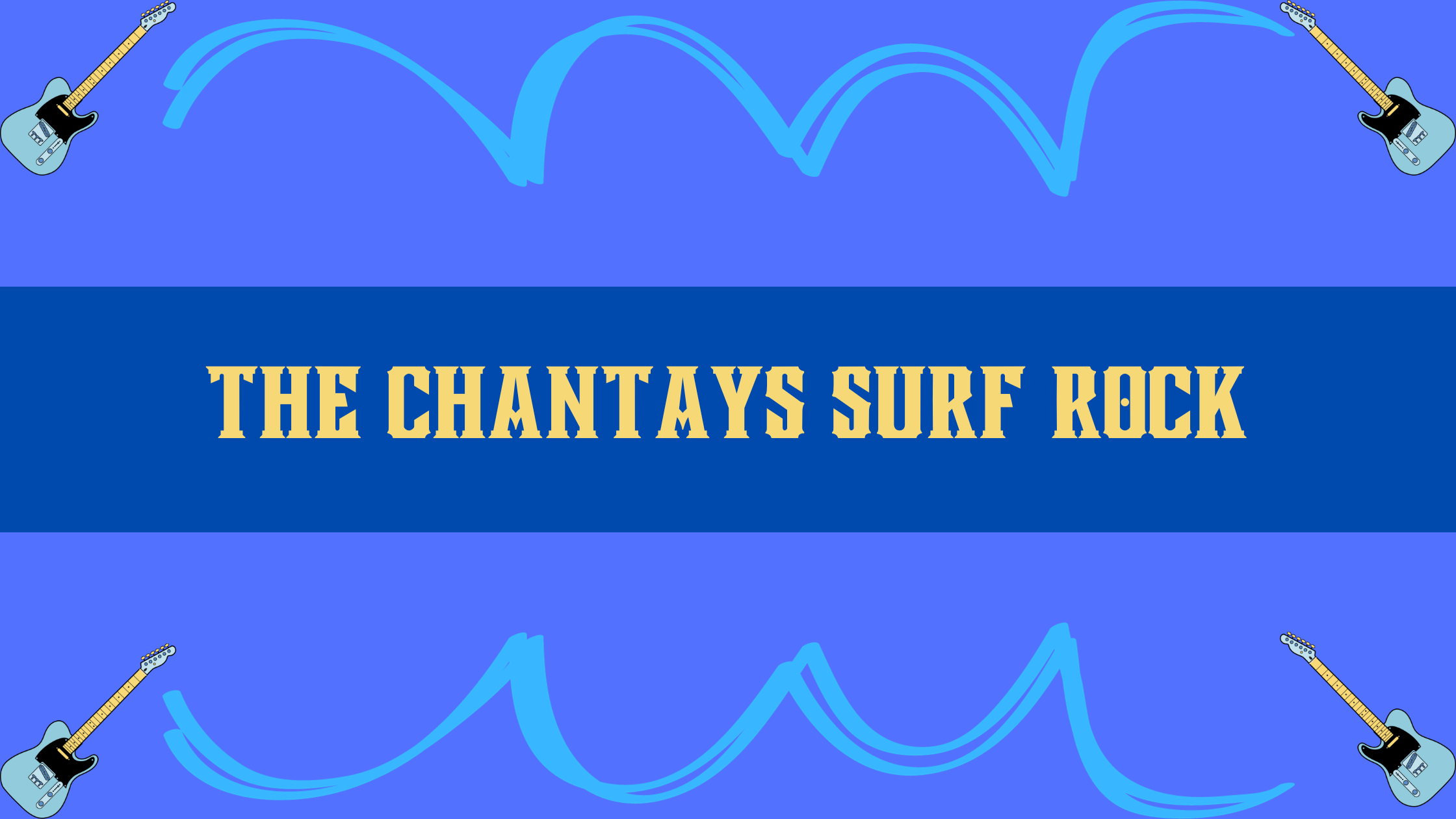When one thinks of surf rock, images of sun-soaked beaches, palm trees, and the unmistakable twang of electric guitars often come to mind. In the pantheon of surf rock legends, few names shine as brightly as The Chantays. With their infectious melodies and iconic instrumentals, The Chantays played a pivotal role in shaping the surf rock genre, leaving an indelible mark on music history.
But perhaps what catapulted them to legendary status more than anything else was their unforgettable hit, “Pipeline.” This instrumental masterpiece not only defined their career but also became synonymous with surf rock itself. It’s a track that instantly transports you to the sun-drenched shores of California, riding the waves of pure musical bliss. To truly appreciate The Chantays, we must delve into their origins, tracing the roots of their unique sound and understanding the cultural context that made them such influential figures in the world of music.
The Origins of The Chantays
The Chantays, like many great bands, were forged in the crucible of friendship and shared passion for music. Formed in the early 1960s in Santa Ana, California, the band comprised five talented young musicians: Bob Spickard, Brian Carman, Bob Welch, Warren Waters, and Rob Marshall. It was in this tight-knit group that the magic of surf rock began to take shape.
Surrounded by the surf culture that was sweeping the West Coast at the time, The Chantays drew inspiration from the ocean’s rhythmic ebb and flow. This inspiration, combined with their love for guitar-driven rock ‘n’ roll, laid the foundation for their distinctive sound.
The influences on The Chantays were as diverse as they were immersive. They were undoubtedly shaped by the early rock ‘n’ roll pioneers like Chuck Berry and Duane Eddy, whose guitar-driven tunes resonated deeply with the band members. However, it was the surf rock innovators like Dick Dale who truly lit the creative spark. The Chantays adopted the signature reverb-soaked guitar sound that was becoming emblematic of surf rock, using Fender guitars and amplifiers to create their own sonic identity.
As they honed their skills, The Chantays began to experiment with melodies that mirrored the rise and fall of ocean waves, creating a musical landscape that was as dynamic and captivating as the waves themselves. This innovative approach, fusing rock ‘n’ roll with the spirit of the surf, would ultimately set them apart from their contemporaries.
“Pipeline” – The Breakthrough Hit
“Pipeline”: A Surf Rock Masterpiece
The Chantays’ ascent to surf rock royalty can be attributed in large part to their iconic track, “Pipeline.” This instrumental gem, released in 1963, not only became their signature song but also left an indelible mark on the entire surf rock genre.
Composition and Instrumentation
“Pipeline” is a musical journey that begins with a simple yet instantly recognizable riff played on the electric guitar. The song’s composition is deceptively straightforward, with its opening notes drawing you in like the pull of a tide. The repetitive melody, played with precision, creates a sense of anticipation, much like the feeling of waiting for the perfect wave.
Instrumentally, “Pipeline” features the quintessential surf rock lineup: two electric guitars, a bass guitar, and drums. Bob Spickard’s lead guitar work is the heart of the song, with its twangy, reverb-soaked notes conjuring images of riding the waves. Brian Carman’s rhythm guitar complements Spickard’s lead, creating a rich, layered sound that gives “Pipeline” its distinctive texture.
The rhythm section, consisting of Warren Waters on bass and Bob Welch on drums, provides a solid foundation for the song, driving it forward with a steady beat. The result is a musical experience that captures the essence of surfing—fast-paced, exhilarating, and full of energy.
Production and Chart Performance
“Pipeline” was not only a musical triumph but also a commercial one. Released on the Downey Records label, the song climbed the charts with impressive speed, reaching #4 on the Billboard Hot 100 in 1963. Its success was a testament to the universal appeal of surf rock, transcending geographical boundaries and capturing the imaginations of listeners far from the ocean’s edge.
Culturally, “Pipeline” became an anthem for surfers and beachgoers, embodying the carefree spirit of the 1960s surf culture. It was a time when the thrill of catching a wave and the allure of endless summer days held sway, and “Pipeline” provided the soundtrack to those sun-soaked adventures.
The Chantays’ Musical Style
Surf Rock: A Sonic Ride to the Beach
To understand The Chantays’ musical style, one must first dive into the broader world of surf rock. Surf rock, a genre that emerged in the early 1960s, was characterized by its fusion of rock ‘n’ roll and the surf culture of California. It was music that embodied the sun, sea, and sand, offering a sonic escape to the beach, even for those landlocked.
Defining Elements of The Chantays’ Sound
The Chantays brought their own unique flavor to surf rock, and it was their mastery of certain key elements that set them apart. At the core of their sound was the innovative use of guitar reverb. This effect, achieved through Fender amplifiers and intricate picking techniques, gave their music a distinctive “wet” sound, mimicking the echo of waves crashing against the shore. It was this reverb-soaked guitar work that defined their signature sound, creating a dreamy and immersive listening experience.
Another defining characteristic of The Chantays’ music was their knack for crafting surf-themed melodies. Their compositions often mirrored the rise and fall of ocean waves, evoking a sense of movement and fluidity. This quality made their music not just an auditory experience but a visual one, conjuring images of surfers riding the perfect wave or beachgoers basking in the California sun.
The Band’s Discography
A Journey Through The Chantays’ Music
The Chantays’ musical journey extended far beyond their iconic hit, “Pipeline.” This surf rock powerhouse released a range of albums and singles that showcased their evolving talents and left a lasting impact on the genre.
Albums and Singles Overview
While The Chantays’ discography may not be extensive, it is certainly impactful. Their debut album, “Pipeline,” was released in 1963, capitalizing on the success of its titular track. The album featured a mix of original compositions and covers, all with the signature surf rock sound that fans had come to love.
In 1964, the band followed up with their second album, “Two Sides of the Chantays.” This album delved deeper into their musical versatility, showcasing their ability to explore different facets of surf rock while staying true to their core sound.
Apart from their albums, The Chantays released several singles, some of which garnered attention in their own right. Tracks like “Monsoon,” “El Conquistador,” and “Wayward Nile” demonstrated the band’s knack for creating catchy, surf-infused melodies.
Evolution as Musicians
Over the course of their career, The Chantays demonstrated remarkable growth as musicians. While they initially burst onto the scene with “Pipeline,” they proved that they were not one-hit wonders. Their sophomore album, “Two Sides of the Chantays,” displayed a maturing sound, with more intricate guitar work and a deeper exploration of surf rock’s possibilities.
The band’s ability to maintain their distinctive surf rock identity while expanding their musical horizons showcased their versatility. It’s this evolution that cemented their status as influential figures in the genre, with their music resonating not only with surf enthusiasts but also with those seeking a fresh take on instrumental rock.

The Chantays’ Influence on Surf Rock
Pioneers of a Musical Revolution
The Chantays played a pivotal role in popularizing surf rock during the 1960s. Their unique blend of electric guitars, reverb-soaked melodies, and surf-themed compositions helped define and shape the genre.
Influence on Subsequent Bands and Musicians
The impact of The Chantays’ music reverberated far beyond their own era. Their trailblazing use of guitar reverb and surf-inspired melodies inspired countless surf rock bands and musicians who followed in their wake. Bands like The Ventures and The Surfaris drew inspiration from The Chantays’ sound, adopting similar techniques and contributing to the continued growth of surf rock.
The Chantays’ influence even extended beyond the realm of instrumental surf rock. Their ability to create evocative, narrative soundscapes without lyrics showcased the power of instrumental music. This influence can be heard in various genres, from garage rock to post-rock, where instrumental compositions convey emotions and stories without the need for words.
Contributing to Surf Culture
Beyond their musical contributions, The Chantays’ music played an integral role in shaping the surf culture of the 1960s. Surfing was more than just a sport; it was a lifestyle, and the music was its soundtrack. The Chantays’ tunes became anthems for surfers and beachgoers, capturing the exhilaration and freedom of riding the waves.
VII. The Chantays’ Legacy
A Lasting Impact on Music and Surf Rock
The Chantays, often associated with their iconic hit “Pipeline,” have left an enduring legacy in the music industry and the realm of surf rock. Their impact can be measured not only by their chart-topping success but also by the indelible mark they left on the genre they helped define.
Influence on Surf Rock
The Chantays’ influence on surf rock cannot be overstated. They were among the pioneering architects of the genre, crafting a sound that would set the standard for generations of surf rock bands to come. Their reverb-soaked guitar work, surf-themed melodies, and instrumental compositions have continued to inspire musicians seeking to capture the spirit of the beach and the thrill of the waves.
Awards and Recognitions
While awards may not have poured in by the dozen, The Chantays’ contributions to music were certainly celebrated. Their timeless hit “Pipeline” earned them a place in the Surfing Walk of Fame in Huntington Beach, California, cementing their status as surf rock legends. This recognition was a testament to the enduring appeal and cultural significance of their music.
Post-Band Careers and Contributions
After their initial success, members of The Chantays pursued diverse paths in the world of music. Some went on to become accomplished session musicians, lending their talents to various recording projects. Others continued to perform live, sharing their musical expertise with audiences around the world.
Bob Spickard, one of the band’s founding members and the driving force behind their signature guitar sound, continued to perform and record music throughout his life. His dedication to surf rock and instrumental music contributed to the genre’s longevity.
Similar Articles (Surf Rock)
- Best Electric Guitar Models for Surf Rock: Read here
- How to get Surf Rock Guitar Tone: Read Here
- Best Guitar Picks for Surf Rock: Read Here
- Iconic Surf Rock Bands: Read Here
- Iconic Surf Rock Albums and Legendary Songs: Find out More Here


